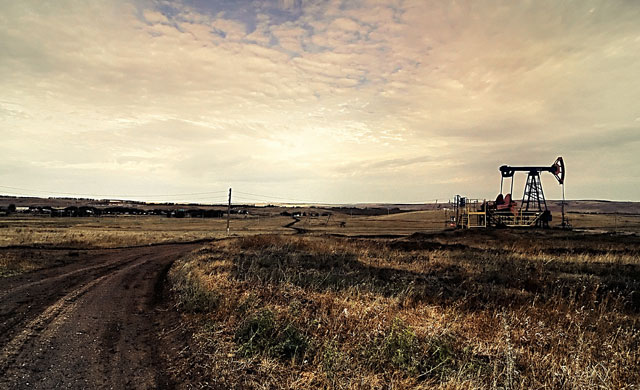Tanzania is fundamentally rural and not connected to the grid, so it’s no surprise that 90% of its primary energy needs come from Biomass – leading to rapid deforestation – with Petroleum making up 7.8%, natural gas 2.4% and hydropower 1.2%.

Less than 10% of Tanzania’s 40m plus population have access to electricity. In 2009 Electricity itself only took up 0.6% of energy consumption, with 4.4 TWh produced per annum – 2.6TWh from hydropower and 1.6TWh from gas – with petroleum generators at 0.04TWh and 0.12TWh from coal.
With the recent drought in East Africa, dams have not been full so supply has been severely restricted, meaning high cost imported diesel and jet fuel fuelled generators have tried to make up the power deficit – coupled with this they have an extremely leaky grid with T&D losses of 20-30%.
Aggreko and Symbion have been installing temporary power systems and managing the fuel supplies. Last year Tanzania’s energy mix had dramatically altered with Gas generating 330MW, fuel generating 365MW and water sources generating between 120MW and 130MW of capacity (total hydro capacity is about 560MW). The country utilised 1.37 million litres of diesel, 518,000 litres of Jet A-1 and 500,000 litres of H04 daily to generate power from fuel. Between July last year and February this year, Tanesco spent Sh654.5 billion to purchase fuel for the emergency power generation out of a total government subsidy of Sh231.2 billion.
One of the main energy strategies for the country is a move away from this heavy reliance on hydropower, such as the centrally located 80MW Mtera Dam – having just over 16% of the countries supply when it’s got water backing it. There are numerous projects in the pipeline, such as 300MW central region wind project, there are proposals to drill in Mbeya, in the South, to test the viability of geothermal energy, from a total estimated potential of 650MW. However the safe bet, after the offshore finds, is gas.
At present there are three major gas power stations, with two run by Tanesco, Ubongo (102MW and Tegeta 45MW), and one run by the independent power provider Songas at 180MW. Songas also own the pipelines and gas fields on Songo Songo island – the only gas source for Tanzania and its Dar Es Salaam power hub. In fact the Songo Songo gas pipeline can produce 100msf/d and is the main feeder for gas into all the power stations, the surrounding industry and the domestic middle class households. Plans to increase capacity by 45% have been halted as the Chinese pipeline plan has come to the fore – they are having their monopoly busted.
Gas & Industry
However, with the huge finds offshore, and smaller finds onshore, Tanzania is looking to exit its energy nightmare primarily with gas, as well as using it to ramp up industrial production. The real clincher for moving industry into place and halting the rolling blackouts has been the Dar Mtwara pipeline and its potential capacity for 780mscf per day. It looks like there has been a concerted effort to tie in the new supply with gas processing, cement factories and power, such as the Tanesco Symbion Mnanzi bay Mtwara 400 MW gas plant, with new T&D running west to Songea. This plant is expected to be upgraded as capacity comes online.
The 1.5mtpa (website saying this but some quotes putting it at 3mtpa) Dangote cement factory due to be constructed in Mtwara will demand 30 MW, a $1.85bn fertilizer factory will demand 20 MW and a uranium mine in Namtumbo (Ruvuma Region) will demand 30 MW. Furthermore you have other regional infrastructure such as the airport and new port facilities – all the first stepping stones for a rapid industrial revolution.
One of the more interesting stories is cement and the number of new entrants into the Tanzanian market on the back of this industrialisation splurge. The three existing cement manufacturers – Tanzania Portland Cement, Mbeya Cement and Tanga Cement – have a combined capacity of 1.2-million tons against a total demand of 2.2-million tons. Owing to the domestic undersupply Tanzania has been forced to rely on imports, mostly from Pakistan. The tight market and potential growth due to the imminent infrastructure projects, means capacity expansions, and new entrants, such as Dangote, are going to push potential production to 6-7mtpa by 2015. Although the cement market may weaken temporarily, the long term bet is towards a rapid snap back to higher pricing as the pace of development continues with the Dar Mtwara pipeline capacity heavily underutilised and the expected ‘go’ for LNG liquefaction facilities along the coast.
There are other projects in the “pipeline” for Dar but yet again these have been on the drawing board for years – highlighting the risk that grandiose statements of intent don’t necessarily translate into action in Africa. At the moment the Government is facing an internal power struggle as the leadership is moving towards a change over, with increasingly heated exchanges over new gas policy and its goals.
Tanzania’s New Gas Policy
Last year Tanzania unveiled a new draft gas policy, which sensibly prioritises gas for domestic growth and intertwining of infrastructure to mitigate the resource curse of dutch disease, a regulatory body overseeing the national oil corporation TPDC and gas markets, regional coordination, competitive licensing rounds for exploration, the establishment of a natural gas sovereign wealth fund and moves to general overall transparency.
Critics say it does not explicitly state how the alleviation of poverty is going to be managed and whether TPDC is going to be stripped of its regulatory oversight of the upstream sector, but the scope is there for the up and coming legislation in the Natural Gas Act and Gas Utilisation Master Plan, which is expected to flesh out the basic framework of the policy.
As an aside the Dar Mtwara pipeline is more than enough for a rapid increase in Tanzanian growth potential, however on the global stage it is small fry. For example, the gas flow per year could supply a 6Mtpa liquefaction plant, 3% of the global LNG market, 100 standard 135,000m^3 LNG tanker loads, 5GW of CCGT at a 90% load factor, or enough to supply Austria for a year.
Conclusion
Tanzania has had a rough ride, being heavily reliant on an imbalanced portfolio of power production. The Dar Mtwara pipeline has been the salvation of the country allowing it to forge ahead with rapid synchronised development of both industry and a switch in baseload capacity dependence – although when the rains do come, the sector will face problems in terms of choosing what to switch on. Furthermore you could argue that a gas crazy mentality is taking hold at the expense of source diversification. The gas legislation due, in draft, looks to be a step in the right direction, although it is already delayed from promulgation and the risks of government infighting are still present. In all though, this is laying the foundations for a new leg of growth in the Tanzanian economy, as the dirty old track becomes the telegraph road, but there are the standard risk factors of a disenfranchised numerous lower class and its impatience to benefit, as shown in a recent Gallup poll.


 Hot Features
Hot Features










